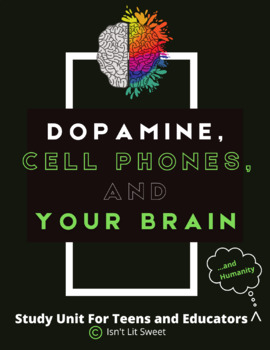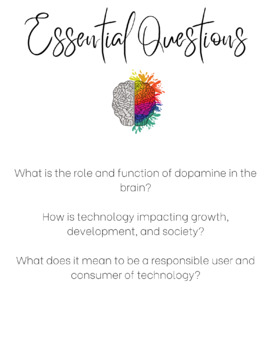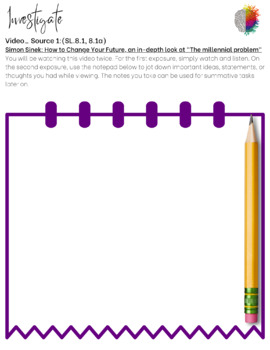Dopamine, Cell Phones, and Your Brain: The impact of social media
- PDF
Description
Educators ~ Capture your students' attention and foster their understanding of the intricate connection between their brains, cell phones, and overall well-being with this engaging and interactive study unit. Tailored for middle and high school students, this resource is a must-have for educators who have observed concerning behaviors in their students, including decreased performance, apathy, and social-emotional declines since the return to in-person instruction during the 2021-2023 school years.
Unleash the Potential of Your Students: Addressing Key Concerns
As teachers nationwide returned to in-person instruction in the 2021-2023 school years, they discovered a range of unsettling behaviors among their students:
- Disconnection and apathy
- Incomplete, missing, or neglected assignments
- Escalation in unwanted behavior
- Reduced endurance for reading, writing, and collaboration
- Social-emotional declines
- Heightened violence and destruction
- Lower test scores and overall academic performance
The Growing Influence of Cell Phones: A Modern Challenge
While cell phones have become a common sight in schools, their prevalence and reliance, particularly among children aged 11-17, have skyrocketed over the past decade. Extensive research and data indicate that excessive cell phone usage, social media engagement, and gaming can profoundly impact students' academic achievements, social-emotional well-being, and future success.
Equip Your Students for a Positive Digital Experience
This comprehensive study unit guides students in acquiring the necessary skills to navigate the internet safely and responsibly, make informed choices regarding social media, and establish healthy boundaries for technology use. Through a captivating array of documents, multimedia resources, and thought-provoking activities, students will delve into the inner workings of the brain's dopamine system, unravel the intricate strategies employed by tech giants to maintain users' attention, and recognize how these factors can disrupt their overall happiness, performance, and future prospects.
Prepare your students for a digitally empowered future while addressing their well-being concerns. Get this transformative study unit today and unlock your students' potential to thrive in a technology-driven world.
Here’s What You’ll Get:
- A total of 16 investigation sources ( CCSS and/or CASEL standards attached to each)
- 9 video sources
- 6 document sources
- 1 audio source (radio interview)
- A variety of formative practice tasks ( CCSS and/or CASEL standards attached to each)
- Gallery walk
- Self-assessment tools
- Text-dependent Questions
- Reflections through writing
- Collaboration
- Accountable Talk
- Concept mapping
- Cloze Summary
- Guided Notes
- Summative assessments (3) include:
- Multiple choice
- Open Response
- Project-Based/ Performance Task (choice board)
- Answer Keys
The unit has enough resources and tasks to keep your students learning and engaged for a month, but you can pick and choose which resources to use depending on your students, time commitment, and level of depth. Your students will be surprised to learn the secrets behind their phones and will learn how to better choices with the technology they use every day!





